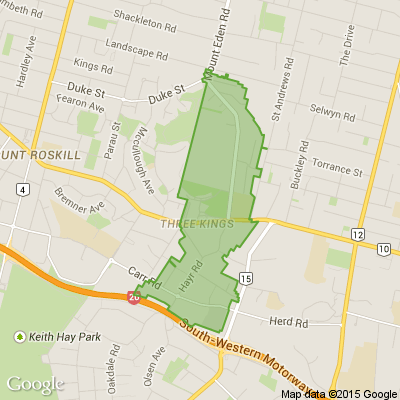Police are investigating after a bus driver was allegedly punched in the face and "had some teeth knocked" out in Avondale.
Police said it was alerted to the incident at about 10.17am yesterday.
"The driver received facial injuries and was transported to hospital," a spokesperson said.
"Police are making inquiries into the assault to identify those involved."
Tramways Union president Gary Froggatt said the driver was allegedly punched in the face by a passenger.
Froggatt wanted more to be done about "issues like this".
"I realise you can't have a policeman on every bus, but the drivers and the unions seem to be left out of the conversation.
"He's in hospital getting stitches put in his knee. He had his teeth knocked out," he said.
Froggatt said he got "about three or four calls like this" from drivers a month.
"I feel for the family, the drivers should be able to go to work and go home safe."
Auckland Transport said it was aware of the incident and assisting police with their investigation.
Group manager of public transport operations Rachel Cara said the bus operator was ensuring the driver has the support they need.
"We operate over 13,000 bus services every weekday and fortunately the majority of our passengers are amazing, but these isolated incidents are concerning.
"Our bus drivers work tirelessly to keep Aucklanders moving and deserve to feel safe in their place of work.
"We continue to work closely with police, other agencies and communities to improve safety on public transport."
Police urged witnesses to call 105.
===============================================
www.1news.co.nz...
==============================================
What's your favourite tomato recipe?
Kia ora neighbours. We know your tomato plants are still growing, but we're looking ahead to the harvest already! If you've got a family recipe for tomatoes, we'd love to see it and maybe publish it in our magazine to share with our readers. Send your recipe to mailbox@nzgardener.co.nz, and if we use it in the mag, you will receive a free copy of our February 2025 issue.

THE ORNAMENTAL BRICK COTTAGE (corner Trafalgar & Manukau)
Corner called Robin's Corner after grocers shop there.
Passengers on all types of conveyances, Horse drawn bus from the late 1870's, then Electric trams from 1903 to 1956, and Diesel and Trolley buses from 1956, down to the present day, evinced an absorbing interest in the brick cottage which stood in Trafalgar Street, adjacent to Manukau Road, Onehunga.
The neat appearance, clean and wholesome, looking as though it was hosed down every day of its existence, was the subject of much speculation of latter day viewers. There were to be found in the ranks of the historians of Onehunga, some who said that the pretty little cottage had been built by a New Zealand Royal Fencible in the 1847-56 period. Others, however, considered it was erected by a discharged Fencible in the 1860s. Some said it was erected by the Government for the senior-sergeant of Fencibles stationed in Onehunga.
All conjectures of the would-be-pundits led to a private investigator delving into the old records to answer an inquiry directly submitted to the Onehunga Borough Council by an Arts Diploma holder of the Elam School of Arts. The Town Clerk, the late Mr. Norman L. Norman ascertained from a reliable source that the brick cottage stood on a part allotment of land which belonged to John Beattie, a Fencible, ex¬ Royal Marines, who came to New Zealand with the Fifth Division of pensioners on the troopship "Berhampore" arriving at Auckland on June, 16th, 1849. The original grant of a contracted area of land, something greater than one acre, situated at the corner of Manukau Road and Trafalgar Street, was issued to John Beattie in 1856. The corner, thereafter, was known as Beattie's Corner, and retained this appellation until Mr. J. Robins built his store in the late 1880's on a site opposite to John Beattie's acre, when the name was Robin's corner, supplanting Beattie's Corner.
The purchaser of the section on which the cottage stood was Thomas Henry Massey, believed to be a Midlander from England. Massey was noted for his flair for artistic construction in brick and it is said that he was responsible for the design of the facades of the Branches erected by the Auckland Savings Bank in Newmarket and Onehunga in 1885.
The house in Trafalgar street, with a chimney at either end, its slate roof and white stone ornamental facings, was an object of interest to local residents and horse drawn bus passengers as well, while it was being erected.
The bricks were made at Avondale to Massey's specifications, and any that did not measure up to the standard required by the builder were rejected.
The actual year in which the cottage was built is not recorded in archives of the Borough Council. But two residents who were asked about 30 years ago, (1934) to fix a year which would be approximately correct, said that the cottage was occupied by Thomas Massey in 1878.
The edifice being finished off at the present moment is a bit different from what was originally there as described above.
The Greater Atua - Day 8
In Māori culture, atua refers to spiritual beings, ancestors, or gods that embody and oversee the forces of nature and the universe. Atua can represent elements like the sea, forests, sky, or even concepts such as peace or war. They are often linked to whakapapa (genealogy) and are seen as guardians and kaitiaki (caretakers) of their respective domains.
For example:
Tāne-mahuta: Atua of the forests and birds.
Tangaroa: Atua of the sea and marine life.
Ranginui: Atua of the sky (Sky Father).
Papatūānuku: The Earth Mother.
Hine-nui-te-pō: Atua of death and the underworld.
**************
In the sacred realms of Te Ao Māori, Tāne-mahuta (the atua of forests and birds) and Tangaroa (the atua of the sea) once had a disagreement. Each believed their mana (prestige) and influence over the natural world made them the greatest among the atua. Their debate grew heated, and to settle the matter, Io Matua Kore, the supreme being, appeared in the form of an unending pou (pillar).
Io proclaimed, "Whoever can reach either the top or the base of this pou will prove their greatness." Tāne-mahuta transformed into a hawk, soaring high into the skies to find the top, while Tangaroa shifted into a great taniwha and dove deep into the ocean to find the base.
Days turned into nights, and neither Tāne-mahuta nor Tangaroa could find the end of the pou. Tāne-mahuta’s wings grew tired as he flew higher and higher, and Tangaroa's strength waned as he swam deeper and deeper into the dark, cold depths of the moana (ocean). Eventually, both returned to the base of the pou, exhausted but determined to share their experiences.
Tāne-mahuta, embodying his role as kaitiaki (guardian), spoke the truth. "No matter how far I flew, I could not see the top of the pou. Its height is beyond comprehension, just as Io's wisdom and power are limitless."
Tangaroa, however, in his eagerness to prove his superiority, falsely claimed that he had touched the bottom of the pou. To support his claim, he called upon a kahawai (a fish) to nod in agreement. Io, knowing the truth, rebuked Tangaroa for his dishonesty and the kahawai for blindly supporting a lie.
As a result of his deceit, Tangaroa was told that while he would continue to command the respect of the seas, the realm of the skies and land would belong to Tāne-mahuta. The kahawai was cursed to be hunted endlessly by birds and humans alike, a reminder of the cost of blind allegiance to falsehoods. Tāne-mahuta, for his honesty and humility, was praised, and his forests and birds would be revered across the land.
---
Moral of the Story
The story teaches us that truth and humility are greater than pride and deception. Greatness comes not from self-proclaimed superiority but from being steadfast in honesty and embracing one’s role as a kaitiaki. It also serves as a reminder that blindly following falsehoods can lead to consequences, just as the kahawai learned. In the Māori world, living with integrity and honouring the interconnectedness of all atua ensures balance and harmony in life.







 Loading…
Loading…











